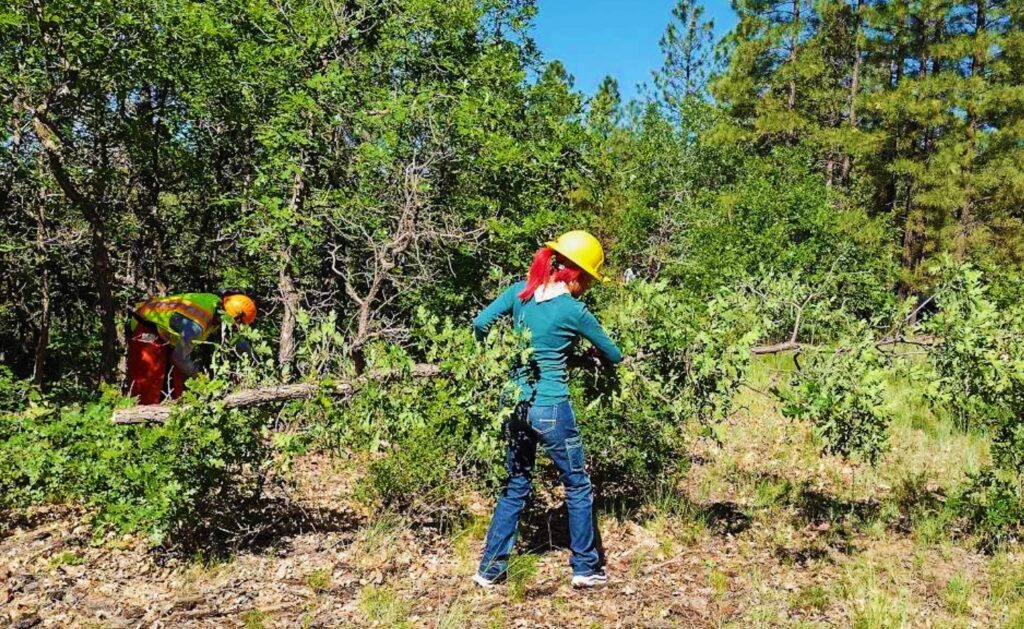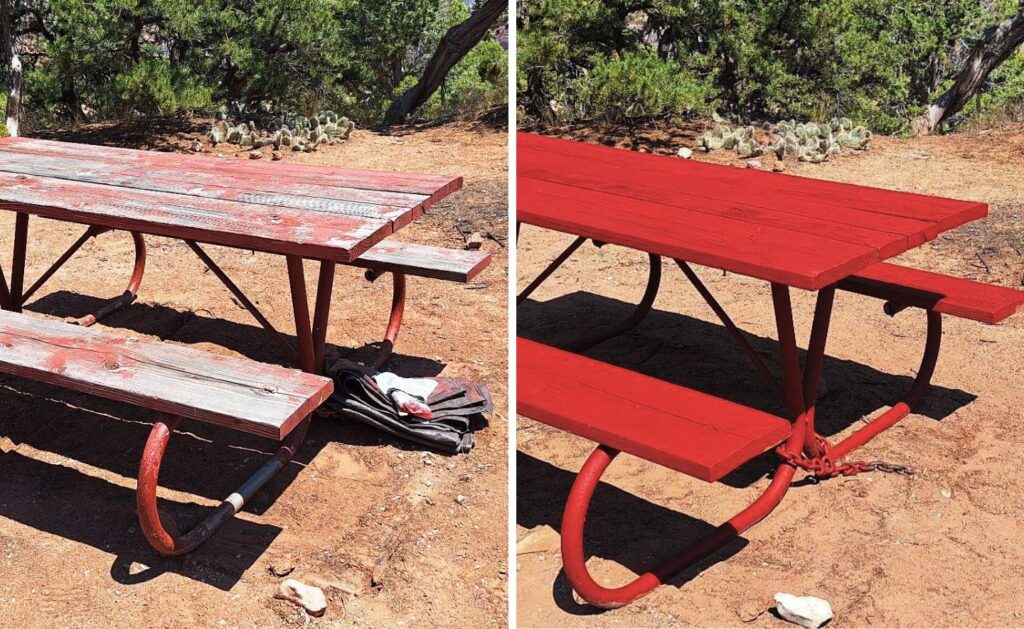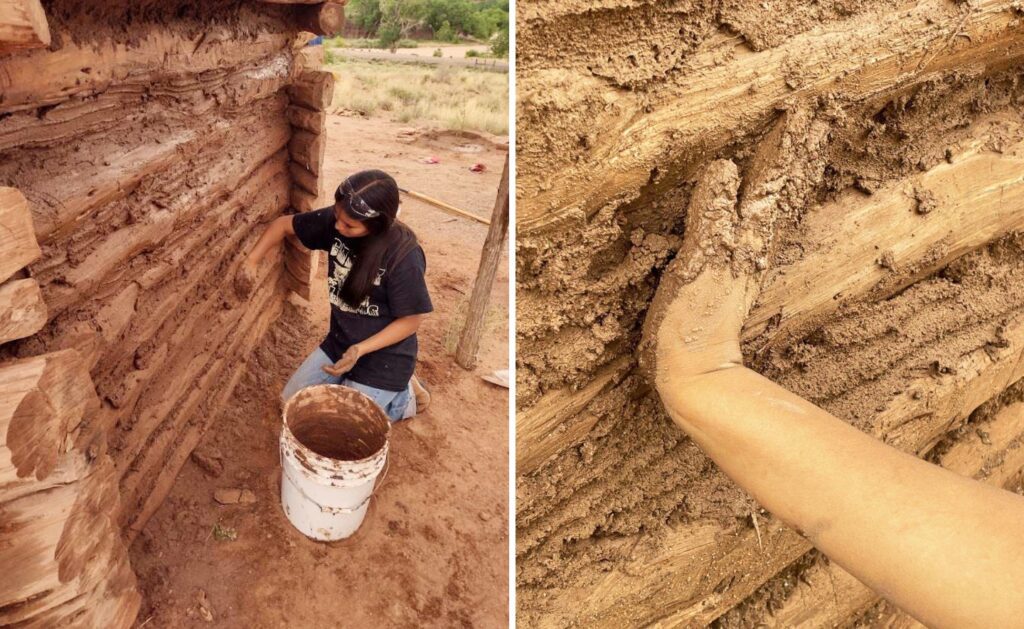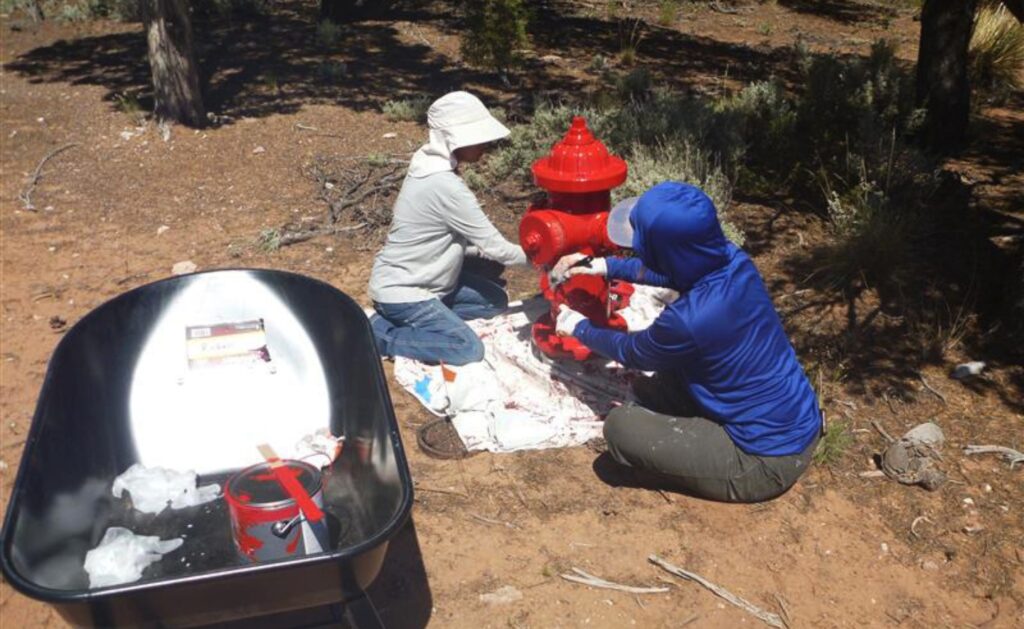In honor of Native American Heritage Month this November, we’re highlighting the important work performed by the SCA’s Four Corners Youth Crew this past summer.

Four Corners Youth Crew members working at Navajo National Monument in 2024. (Photo Credit: Student Conservation Association)
In 2009, the SCA launched its first Four Corners Native American Youth Crew in Arizona. This unique area marks the quadripoint in the Southwestern United States, where Arizona, Colorado, New Mexico and Utah meet.
The program provides paid hands-on conservation opportunities to local Indigenous youth. The crew works alongside National Park Service staff at Navajo National Monument and performs much-needed conservation and maintenance projects at parks located on their ancestral lands.

The Four Corners Youth Crew engaged in projects to enhance the visitor experience and safety at two national monuments in Northern Arizona. (Photo Credit: Student Conservation Association)
For five weeks, a crew of seven members and two crew leaders tackled a backlog of maintenance work at two national monuments: Navajo National Monument and Canyon de Chelly National Monument, both located on Navajo Nation land in Northern Arizona.
This teenaged crew replaced boards on boardwalk paths, refinished and painted picnic tables and repainted handrails and fire hydrants to enhance the visitor experience and safety within the parks.
The work was difficult at times, but crew member Hope Gamble reacted with gratitude.
“The heat and weather challenged me to appreciate everything around me,” Gamble said. “Scary storms bring peaceful mornings, and the burning heat teaches endurance.”

A crew member applies mud to help restore a traditional Navajo dwelling known as a hogan. (Photo Credit: Student Conservation Association)
The crew also engaged in the historic preservation of an oak branch shade ramada and two hogans, traditional Navajo dwellings made of logs and mud. One of the restored hogans, known as the Pink Hogan, was home to the first park ranger of the Navajo National Monument, who was also the great-grandfather of crew member Kelian Yazzie.
Yazzie grew up within five miles of the Navajo National Monument. He loved serving the lands connected with his family history and bonding with his crew in the process.
“The people I worked with left a lasting impression on me,” Yazzie said. “Their camaraderie and support will remain in my memory for a long time.”

Four Corners Youth Crew members repaint a fire hydrant to enhance visitor safety. (Photo Credit: Student Conservation Association)
Your support makes this work possible. Become an SCA Trail Builder by making a monthly gift to support youth across the country who are making a difference in their communities.